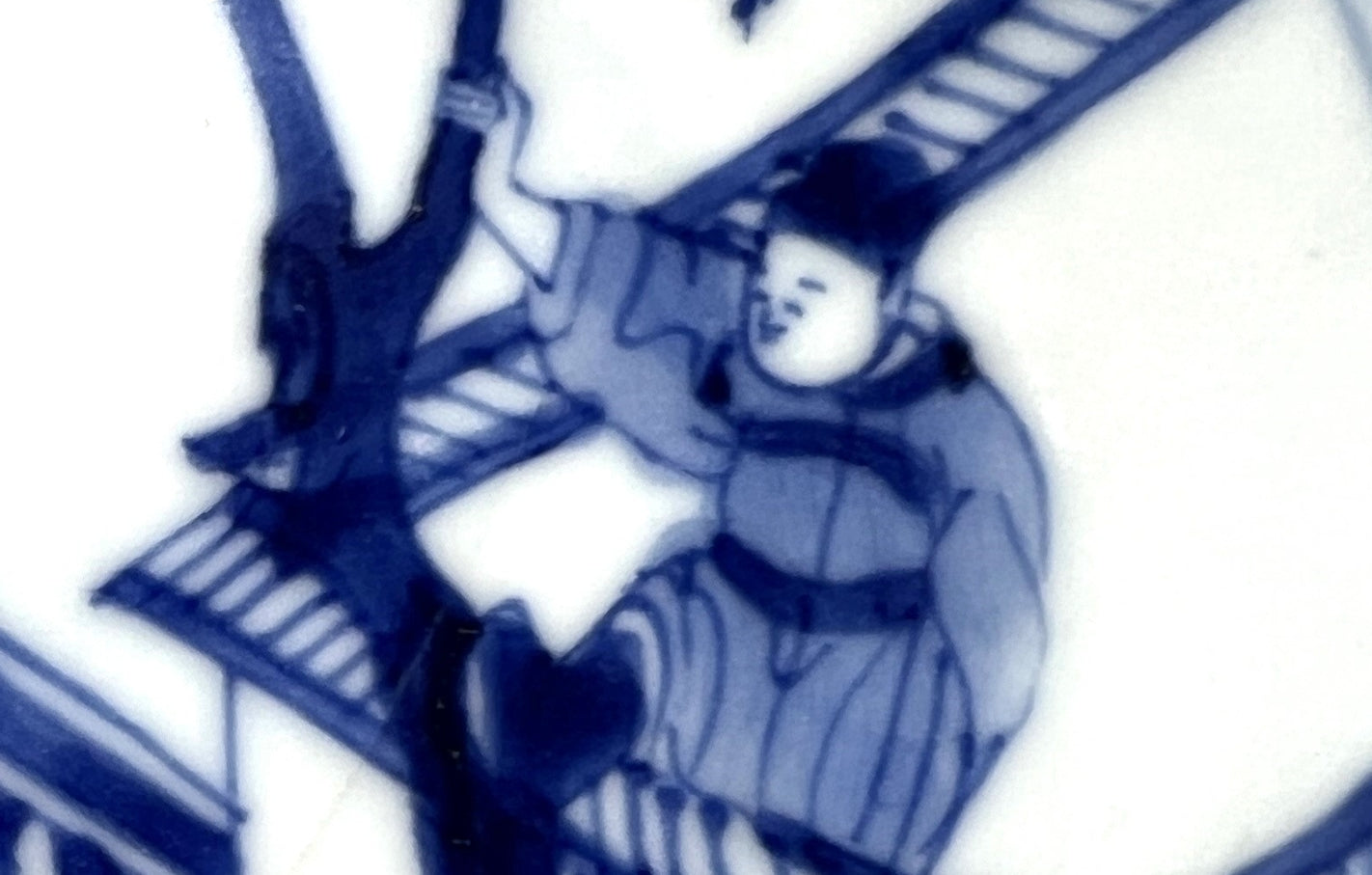AUA Oriental Art
The Romance of the Western Chamber Blue and White Saucer c 1725, Qing Dynasty, Yongzheng Era
The Romance of the Western Chamber Blue and White Saucer c 1725, Qing Dynasty, Yongzheng Era
Couldn't load pickup availability
The scene depicted in the porcelain is inspired by "The Romance of the Western Chamber" (西厢记), which is one of the most famous Chinese classical novels and was among the first to be introduced to the Western audience. The novel, known for its secular love themes, was widely appreciated by the Chinese populace and served as a cultural bridge to the West due to its rich representation of lay Chinese life and sentiments.
"The Romance of the Western Chamber" tells the story of the love between a young scholar and a beautiful woman, which faces various obstacles and societal pressures. The novel's themes and scenes have been popular motifs in Chinese art and porcelain, reflecting the story's influence and the appreciation for literature in Chinese culture.
Period : Qing Dynasty, Yongzheng Period
Production Date : C 1725
Made in : Jingdezhen
Destination : Netherland
Found/Acquired : Southeast Asia , South China Sea, Ca Mau ship
Size : 11.5 cm (Diameter) - SAUCER
Condition : Good (Slight crack on the front)
Reference : Double checked with reference to the original catalogues
1) Tau Co Ca Mau(The Ca Mau Shipwreck) Catalogue 2002 / The National Museum of Vietnamese History
2) THE CA MAU SHIPWRECK PORCELAIN : from the Collection of Dr.Zelnik , 2000
3) Sotheby’s Amsterdam, 2007 : Made In Imperial China / Sotheby's
4) Asian Ceramic Found along Maritime Silk Route / National Maritime Museum of Korea
* The Ca Mau Cargo
The Ca Mau Cargo refers to a Chinese cargo sunken sometime between 1723 and 1735 off the coast of Vietnam’s farthest point in the South China Sea, discovered by Vietnamese fishermen in 1998. It is believed the ship was a Chinese merchant’s cargo on its way from Canton (Guangzhou) to Batavia when it caught fire and sank. The merchant had ordered the goods on board for Dutch traders, who had limited access to China and its ports.
* Porcelain for the European Market
The Ca Mau Cargo consisted of numerous types of porcelain, chinaware and blue and white wares, all designed for the European market. Blue and white ceramics recovered from the cargo appear decorated with the so-called ‘Scheveningen landscape’, also known as ‘Deshima décor’. This motif usually depicted a traditional Dutch fishing village, executed in Chinese style. Chinese wares with Western motives were extremely popular and made to order and were known as ‘China de commande’.
Share










